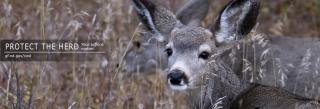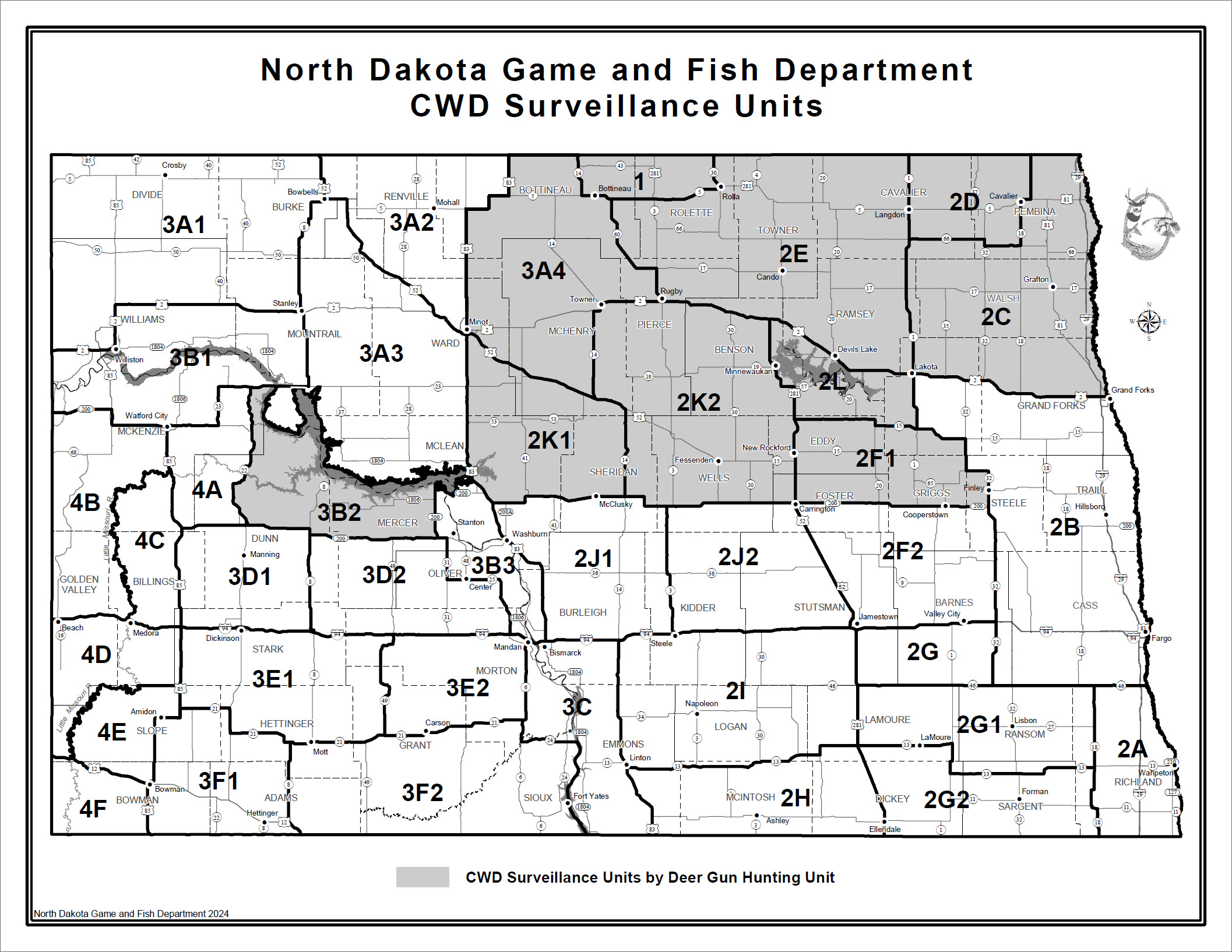
Chronic Wasting Disease (CWD)
Chronic wasting disease is a fatal disease of deer, moose and elk that can cause long-term population declines if left unchecked. There is no treatment or cure, and once established in an area, it remains indefinitely. For these reasons, CWD poses a major threat to North Dakota deer, elk and moose and the future of hunting these animals.
Combating CWD is a long-term endeavor that requires committed, diligent effort from all North Dakotans who value these big game animals. Through our cooperative dedication to the cause, we can protect these important species and North Dakota’s hunting heritage.
CWD Regulations
Carcass Transport Restrictions
The carcass waste (material not used for consumption, preserved for taxidermy, or defined as lower-risk portions in Section (1)) of a white-tailed deer, mule deer, moose, or elk harvested in North Dakota by any method (gun, archery, muzzleloader) transported out of its respective gun unit of origin must be disposed of via landfill or waste management provider. This requirement does not apply to heads dropped off at Game and Fish Department CWD collection sites, or lymph nodes submitted for CWD surveillance.
For animals harvested outside of the state, high risk carcass parts, as specified in the 2025 proclamation, cannot be transported into North Dakota.
Surveillance and Testing
A deer with CWD will only begin to look sick in the late stages of the disease, several months after it has been infected. Most positive deer found in North Dakota appeared healthy when they were harvested. The only way to determine if your animal is infected with CWD is by getting it tested. Testing information is also critical for determining the distribution of CWD and evaluating the success of the Department’s management strategy.
Sampling kits are available for those who wish to have their animal tested but are unable to drop the head off at a collection site. The kits allow you to remove the lymph nodes yourself and ship them to the Department's Wildlife Health Lab for testing. Request a kit.
Fawns and head-shot animals cannot be tested. If you are unsure of the age or condition of your animal, submit it and we will assess it.
Test Results
Test results can be expected within 4 weeks. When your results are available, you will receive a message in your Game and Fish account inbox.
Note: A number of states have established regulations or recommendations on the transportation of hunter-killed deer, moose and elk. Out-of-state hunters should be familiar with the regulations of the state in which they hunt. For more information on transportation regulations and recommendations in other states, see the CWD Alliance Web site at www.cwd-info.org.

